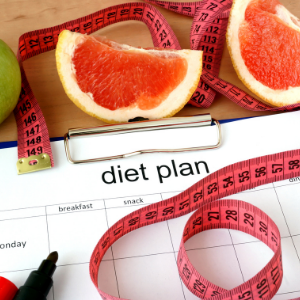
Slow Carb Diet
Ever head the words “slow-carb” before? If it made you curious, fret not, because we will be talking about this type of diet and the benefits of such in this article. So, stay relaxed and let’s start.
What is A Slow Carb Diet?
The slow carb diet (the brainchild of Tim Ferris) basically means that you will have to eat and follow a diet that revolves around low-glycemic foods within a week. So, what are these low glycemic foods and why are they a healthier option compared to carb-rich foods?
Typically, low glycemic foods are those that have 55 or fewer glycemic index which means that once you eat any of the foods included on this list, you will be able to lessen the effects of carbs on your glucose levels.
Besides lowering the spike of your blood sugar levels – you will also get to shed off some unwanted fats while on this diet. Now, to know more about this diet, let us dig deeper into what foods can you have during this diet plan, what are the benefits of this diet, and all you need to know about this.
What Are The Benefits Of The Slow Carb Diet?
Doing the slow carb diet can give you the satisfaction of still having some carbs in your meals while at the same time enjoying the benefits of it. Speaking of such – here are the benefits linked with the slow carb diet:
- Best for people with diabetes – the primary advantage of having low glycemic index foods include a reduction of glucose levels in diabetics. This is great because complications caused by the said disease will also be lessened – giving diabetics more chances of eliminating the effects of the disease.
- Better cholesterol levels – one advantage of having the slow carb diet includes reducing 8-9% of your total cholesterol count and your bad cholesterol (LDL) after a week of following the diet. This means that your risks of heart problems and stroke are also lessened when on this diet.
- Weight loss – another advantage of the slow carb diet includes greater chances of weight loss. It is due to the fact that you will be consuming carbs that have a less glycemic index which is said to promote weight loss. Sadly, more studies are still needed to finally confirm the relationship between low glycemic foods and weight loss.
- Say goodbye to risks of cancer – research shows that individuals who have a high glycemic index diet are more prone to cancer. This proves that having a lower GI diet can most likely rid you of the probabilities of having cancer and diseases similar to it.
The Principles of the Slow Carb Diet (How it Works)
The slow carb diet works on a few principles:
- You are only allowed to have no-carb to low-glycemic foods six days in a week.
- You should avoid having any added sugar or processed foods in those days of the said week.
- Sadly, you also can’t have any fruit within those six days as well.
- No sugary drinks or sodas too.
- You are allowed to have meals every four hours however you can’t have any snacks in between them.
- Your seventh day or that “one day” in a week would be considered as your cheat day.
Bonus! While on this diet, you should also exercise and chew your food as much as you can when possible.
What can you eat when on a Slow Carb Diet?
You will be shocked by the variety of foods that are of low glycemic index! Let us not keep on letting you wait further – this time we will go through different foods that are good to eat when on a slow carb diet.
If you are thinking about all the carbs you want and is worried that you won’t be able to eat your favorites – well, worry no more because in this list your favorite carbs are probably in here.
Here are the different foods that you can choose from when planning to do the slow carb diet:
- Bread – yes, you can eat bread. As long as it is made out of whole grain, rye, multigrain, and even sourdough! This is wonderful for bread lovers who are worried they won’t be able to have some while on this diet.
- Cereals – well, you can still have some of your breakfast cereals while on this diet. Just make sure that it is made out of bran flakes or steel cut oats. At the same time, you can also pair it with dairy alternatives such as coconut milk, almond milk, oat milk, soy milk, and any other nut milk you prefer.
- Rice and Grains – can’t live without your rice? We got you covered – basmati, Doongara, brown, and long grain rice are still alright to have when on this diet. For some grains, you can also pick among quinoa, couscous, freekeh, semolina, and buckwheat if you want any grains in your diet.
- Pasta and noodles – I know you’re shocked, but yes, you can still have some pasta and noodles while following this diet. Just make sure to have some vermicelli noodles, rice noodles, soba, and typical pasta that are following the right serving based of the rules and then you are good to go.
- Fruits and Vegetables – for vegetables, you will have to pick between your starchy vegies or those greens or carrots. In terms of fruits – you can choose between apples, any type of berry, peaches, plums, etc.
Additional Things to Note:
If you prefer to have some meat or animal products into your diet – then you definitely can! You can choose from any fish or seafood (e.g. salmon, tuna, sardines, prawns, and trout), and you can also get some beef, chicken, lamb, pork, and eggs.
The founder of this diet also suggested that anyone wanting to do this diet should also have some supplements to go with this diet. This includes calcium, potassium, and magnesium supplements.
Aside from that, he recommends anyone who wants to do this diet to also have some policosanol, green tea extract, alpha lipoic acid, and garlic extract to enhance the positive results from the diet.
Sample Meal Plan
Don’t have any idea what to have while on this diet? Well, here’s a sample meal plan to assist you on your journey.
Breakfast: 1 avocado, 1 slice of rye bread, and scrambled eggs
Lunch: Spinach salad with some diced salmon and extra carrots
Dinner: Smoked chicken with a side of vegetables and beans
Anyway, that was a sample meal plan to give you an example of how you can do this diet for six days in a week.
Is it worth it?
If you are a diabetic looking for a diet plan that is easier than a zero-carb or low-carb diet, then the slow carb diet would be great for you. It is because you can have a lot of flexibility while choosing what to put in your meals compared to other diet plans. Sadly, if you prefer to have a plant-based diet then this won’t be the one for you.
I hope this gives you an idea about what the slow carb diet is and how it works. Wishing you all the best!
References:
Arlene Semeco (2017) The Slow Carb Diet: a review and guide. Retrieved from: https://www.healthline.com/nutrition/slow-carb-diet
Craig Clarke (2020) Slow Carb Diet: rules, Results, Risks, and Sample Meal Plan. Retrieved from: https://www.ruled.me/slow-carb-diet/
Emilia Benton (2020) What is the slow carb diet? Everything to know about the low-glycemic eating plan. Retrieved from: https://www.womenshealthmag.com/weight-loss/a32149673/what-is-slow-carb-diet/
Jillian Levy (2020) What is the slow carb diet? Potential benefits for weight loss and more. Retrieved from: https://draxe.com/nutrition/slow-carb-diet/


Leave a Reply